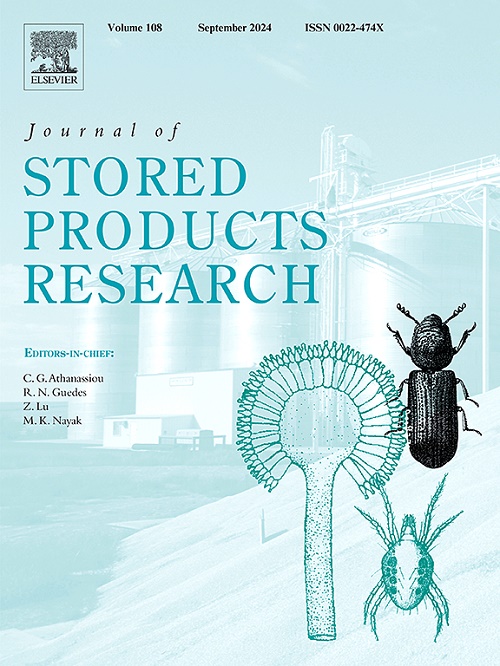Olfactory cues in the host-location of the cosmopolitan ecto-parasitoid Pyemotes tritici (Acarina: Pyemotidae)
IF 2.7
2区 农林科学
Q1 ENTOMOLOGY
引用次数: 0
Abstract
Chemical ecology regarding the ectoparasitoid mite of the family Pyemotidae remains largely underexplored. This field warrants further attention, to enhance the effectiveness of pyemotid mite species as biological control agents against xylophagous insects and stored-product pests, and to clarify the role of these mites in the onset of itchy dermatitis in humans. This is the first investigation regarding the host-location process of Pyemotes tritici (LaGrèze-Fossat and Montane, 1851), an ectoparasitoid that attacks a wide range of hosts, including xylophagous insects and stored product pests. Bioassays in still air olfactometer and open arena have been performed. Females of P. tritici, consistent with the typical behavior of generalist parasitoids, demonstrated the ability to detect and respond to various volatile chemicals emitted from the host habitat (seasoned wood sawdust from pine and beech) and host frass of two longhorn beetles, Hylotrupes bajulus (L.) and Trichoferus holosericeus (Rossi), as well as from feces and silk of the rice moth Corcyra cephalonica (Stainton), while they did not respond to volatiles emitted from the larvae of the same species. Additionally, they detected non-volatile chemicals from the cuticle of T. holosericeus. These results highlight the importance of chemical cues, both direct and indirect, from the host in the host-location process of P. tritici. Moreover, we provided a useful protocol for safely rearing these potentially harmful mites. Chemical analysis of host and habitat VOCs and host larval CHCs involved in the host location process for identification of active compounds will complete the behavioural results here presented.
求助全文
约1分钟内获得全文
求助全文
来源期刊
CiteScore
5.70
自引率
18.50%
发文量
112
审稿时长
45 days
期刊介绍:
The Journal of Stored Products Research provides an international medium for the publication of both reviews and original results from laboratory and field studies on the preservation and safety of stored products, notably food stocks, covering storage-related problems from the producer through the supply chain to the consumer. Stored products are characterised by having relatively low moisture content and include raw and semi-processed foods, animal feedstuffs, and a range of other durable items, including materials such as clothing or museum artefacts.

 求助内容:
求助内容: 应助结果提醒方式:
应助结果提醒方式:


